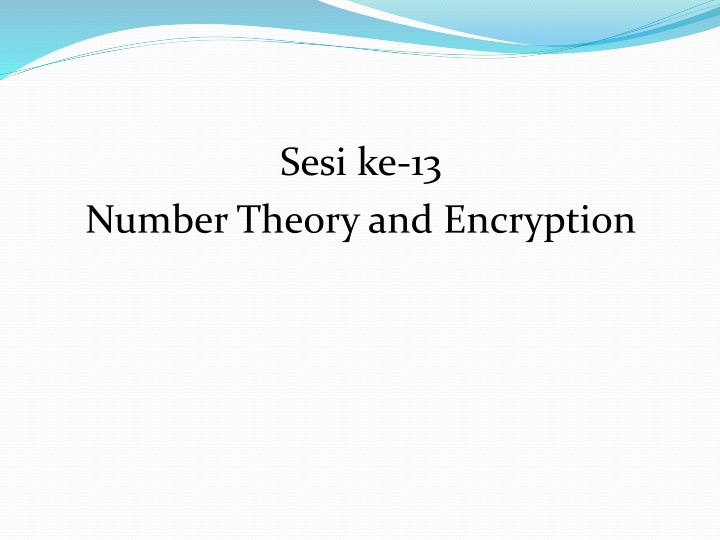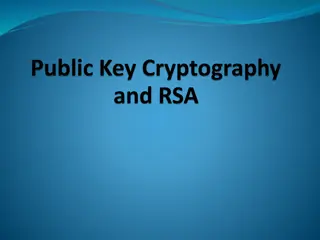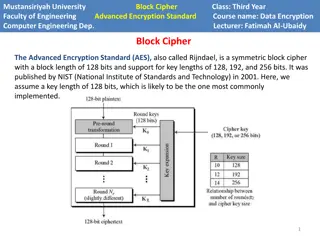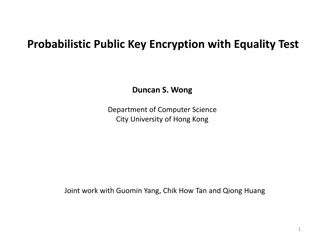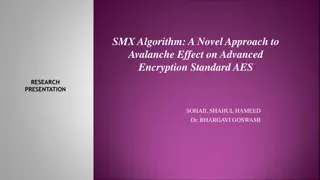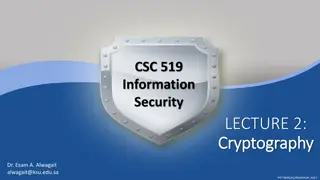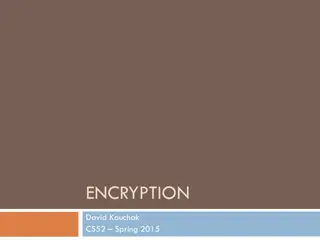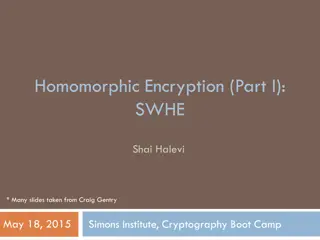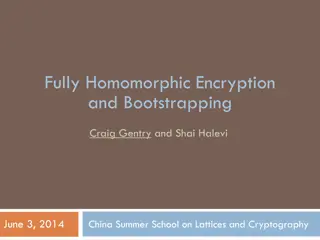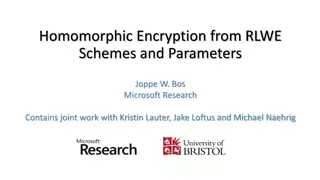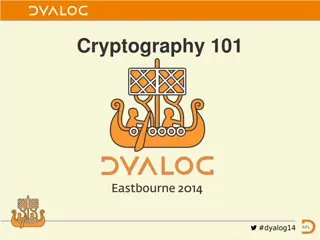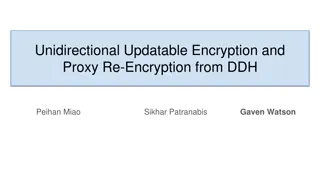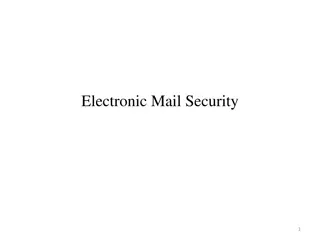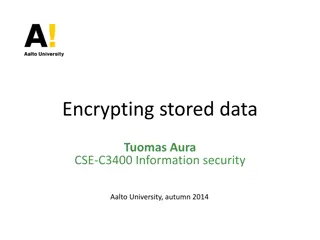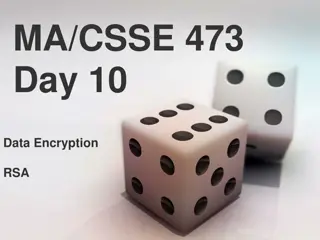Basics of Division in Number Theory and Encryption
Understanding arithmetic operations for discrete numbers is crucial in the world of Number Theory and Encryption. This session covers the fundamentals of addition, subtraction, multiplication, and division, emphasizing key terms like dividend, numerator, divisor, quotient, remainder, and fraction. The rules of division and symbols used for expressing division are explained, highlighting the importance of not dividing by zero and following specific division rules. Dive into the essential concepts for a solid foundation in mathematical computations.
Download Presentation

Please find below an Image/Link to download the presentation.
The content on the website is provided AS IS for your information and personal use only. It may not be sold, licensed, or shared on other websites without obtaining consent from the author.If you encounter any issues during the download, it is possible that the publisher has removed the file from their server.
You are allowed to download the files provided on this website for personal or commercial use, subject to the condition that they are used lawfully. All files are the property of their respective owners.
The content on the website is provided AS IS for your information and personal use only. It may not be sold, licensed, or shared on other websites without obtaining consent from the author.
E N D
Presentation Transcript
Sesi ke-13 Number Theory and Encryption
Arithmetic Operations for Discrete Numbers Addition, to add Substraction, to substract Multiplication, to multiply Division, to divide In terms of Division, students must be familiar with these terms: Division Dividend, Numerator : Pembilang : Penyebut : Hasil pembagian : Sisa Divisor, Denominator Quotient Remainder / Fraction / Modulus
Division for Discrete Numbers In terms of Division, students must be familiar with these terms: Division Dividend, Numerator : Pembilang : Penyebut : Hasil pembagian : Sisa Divisor, Denominator Qu0tient Remainder / Fraction / Modulus
Division for Discrete Numbers Symbols used to express Division: a/b , a : widely used by computers and of different countries. pronounced: a divided by b or a by b . a over b b is only accepted in basic operations, such as in basic calculators. Not accepted in English language, except for ratio ( a: b). used in some mathematical software, such as GNU Octave. They allow the operands to be written in the reverse order by using the backslash as the division operator: b \ a. \
Division for Discrete Numbers Division Rules 1) Divisor can not be zero 2) If divisor is zero, the result is undefined 3) Division of two divisions follows the following rule: Where only p can be zero, the rest are all integers.
Division for Discrete Numbers Division Rules 4) Other rules are as follows:
